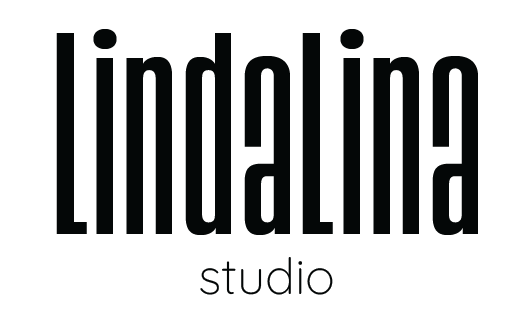Designing a low-powered and solar-energy driven bus stop using the display technology of Etulipa.
Project time: 2 years (on-going)
Role: 3D modeling, CAD design, blog writing, python programming, prototype building and testing
Design Brief
Eviola is a student project for Etulipa, Eindhoven. In this project, an electrical engineering student and I are designing a solar and low-powered bus stop display using the electrowetting displays (EWDs) technology of Etulipa. This technology consumes little to no energy and is also reflective. Therefore, it is sustainable and causes little to no light pollution. The challenge here is to create a fully functioning bus stop display that has an integrated solar panel that can produce enough solar energy on a gloomy winter day.
Project plan
In order to create this display, a project planning was needed. The idea was that, even though there are many unknowns in the project, by making a list of knowns, an estimate project duration and plan could be made and adjusted as time passes. By using a Gantt chart, we were able to track our progress. We used the MosCow method to decide what the display prototype should include in order to be considered "finished".
Display Design
After we set a list of requirements, it was my job to translate this to a visual representation by making 3D renders. By gathering feedback from expert colleagues and possible end-users, the design got improved gradually. Since Etulipa's technology is also constantly improving, the design even got a technology-push which affected the way the display should look. Eventually, we came up with a few design solutions and rated them based on a list of factors (such as adaptability, costs to build, practicality, aesthetics). It resulted in a sleek and minimalistic design solution where the solar panel is separated and can therefore be adjusted in size & direction based on location.
A render of the display design I made. This render is also used on the website of Etulipa to showcase the different applications of their display technology.
CAD engineering
After we concluded what the display should look like, it was time to start CAD engineer the design. We came across many obstacles of design choices that seemed nice on paper, but would not sustain considering the physics of the system. A big challenge was the electronics, battery, display tiles and other components that would have to fit in the display box, while maintaining a sleek design. The display is also considerably heavy, so how do we make sure it does not break off the pole? By using Fusion 360, we were able to simulate weight, strength and other factors and check the prototype.
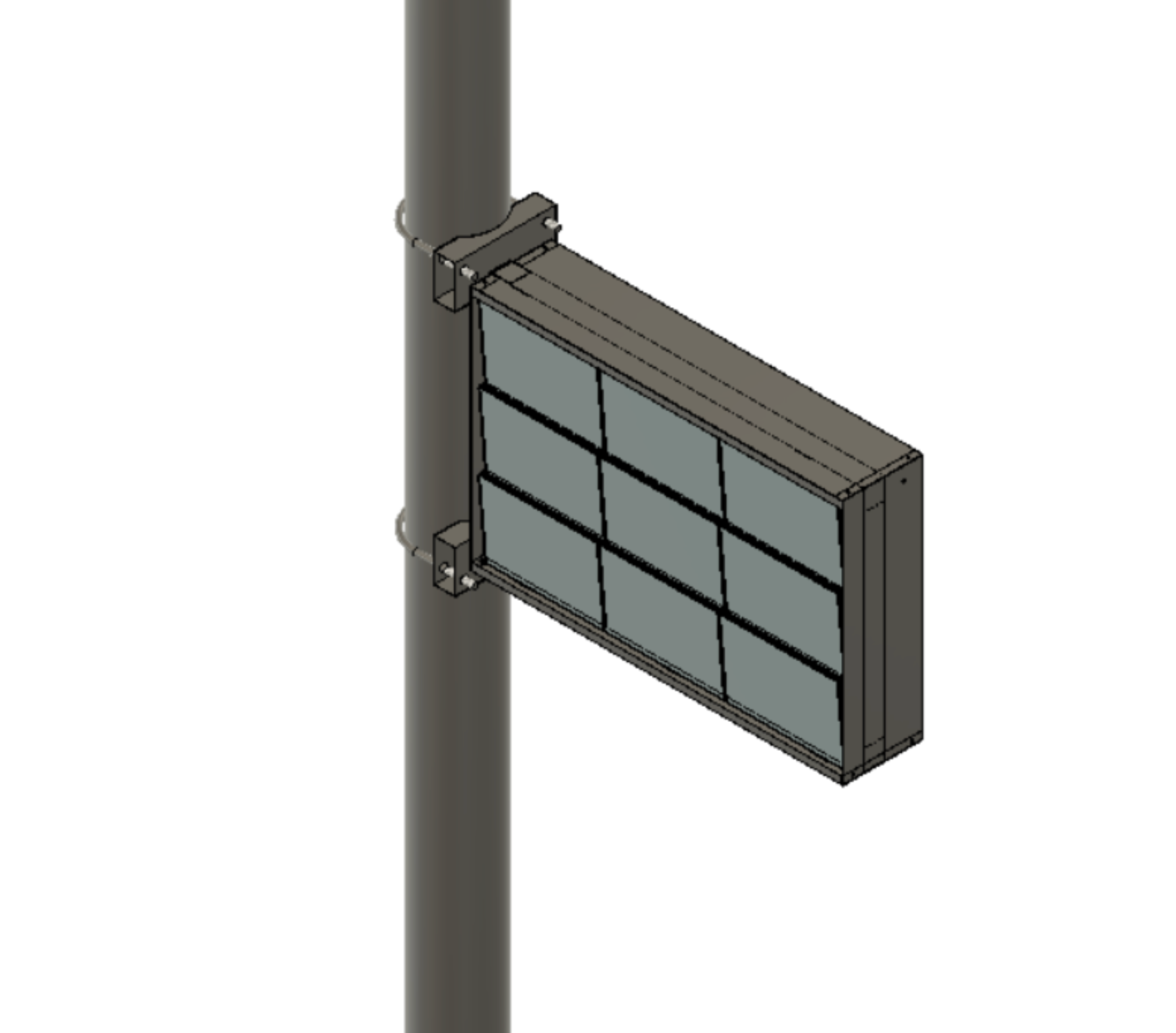
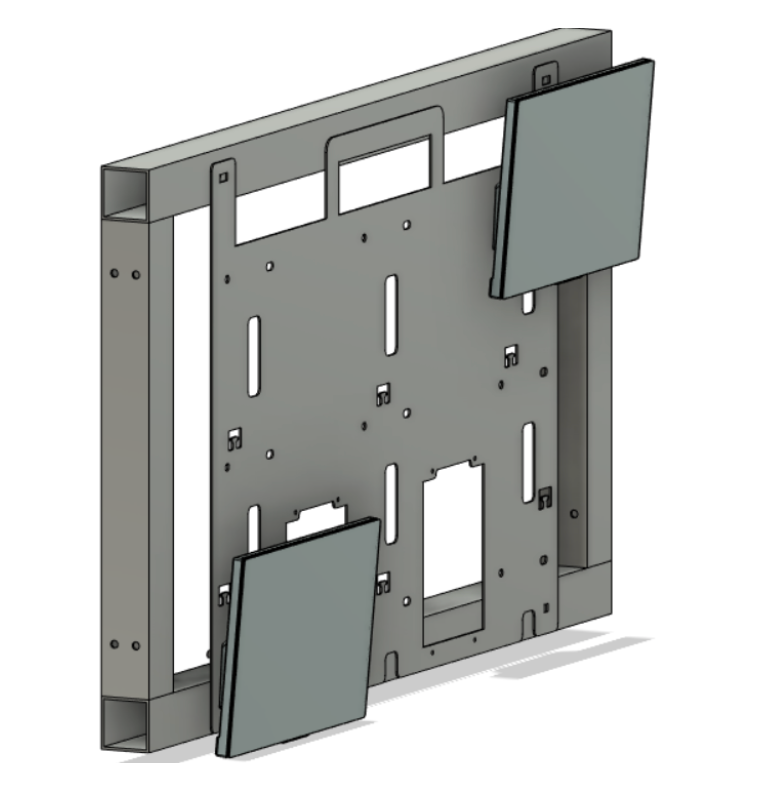
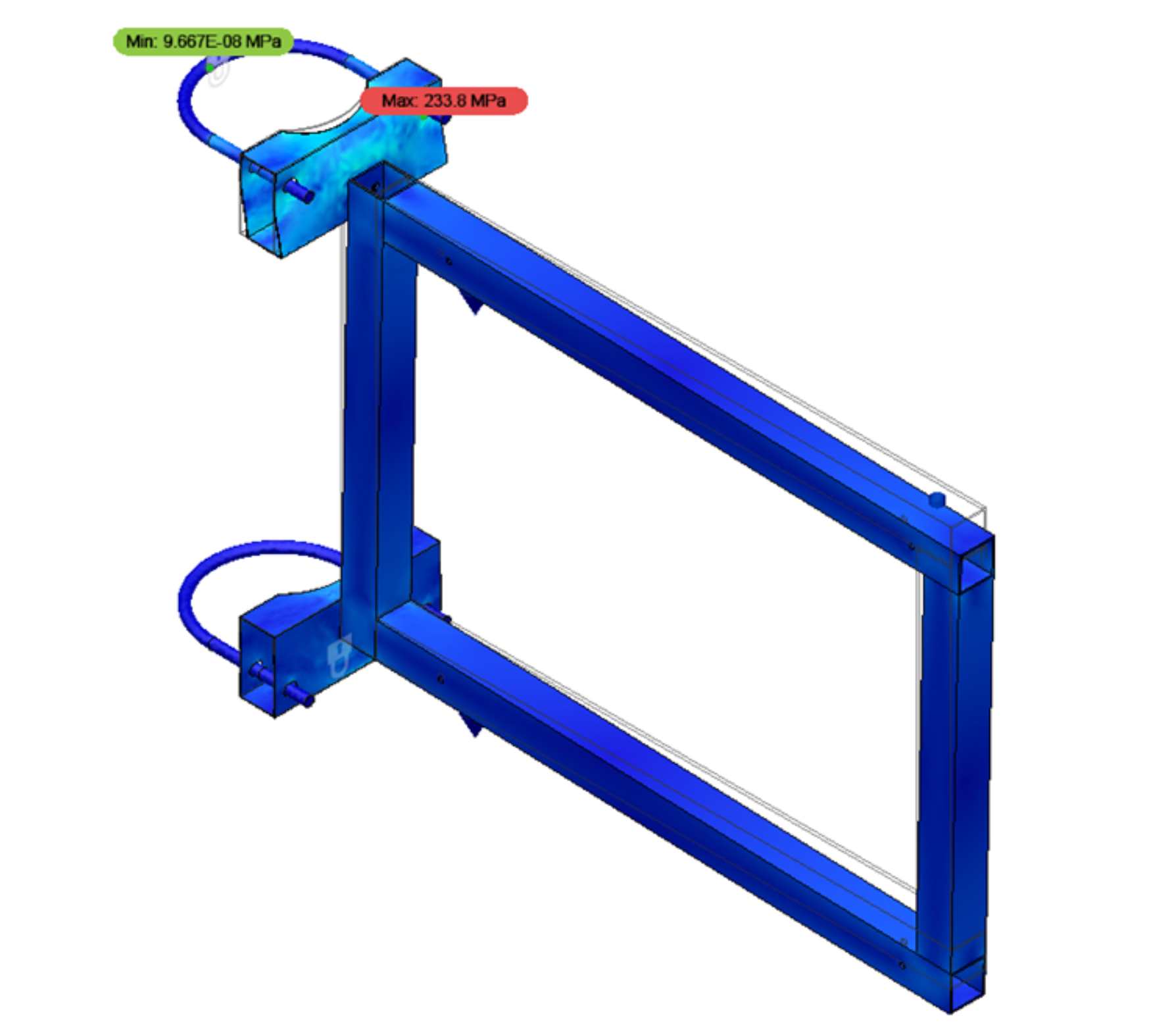
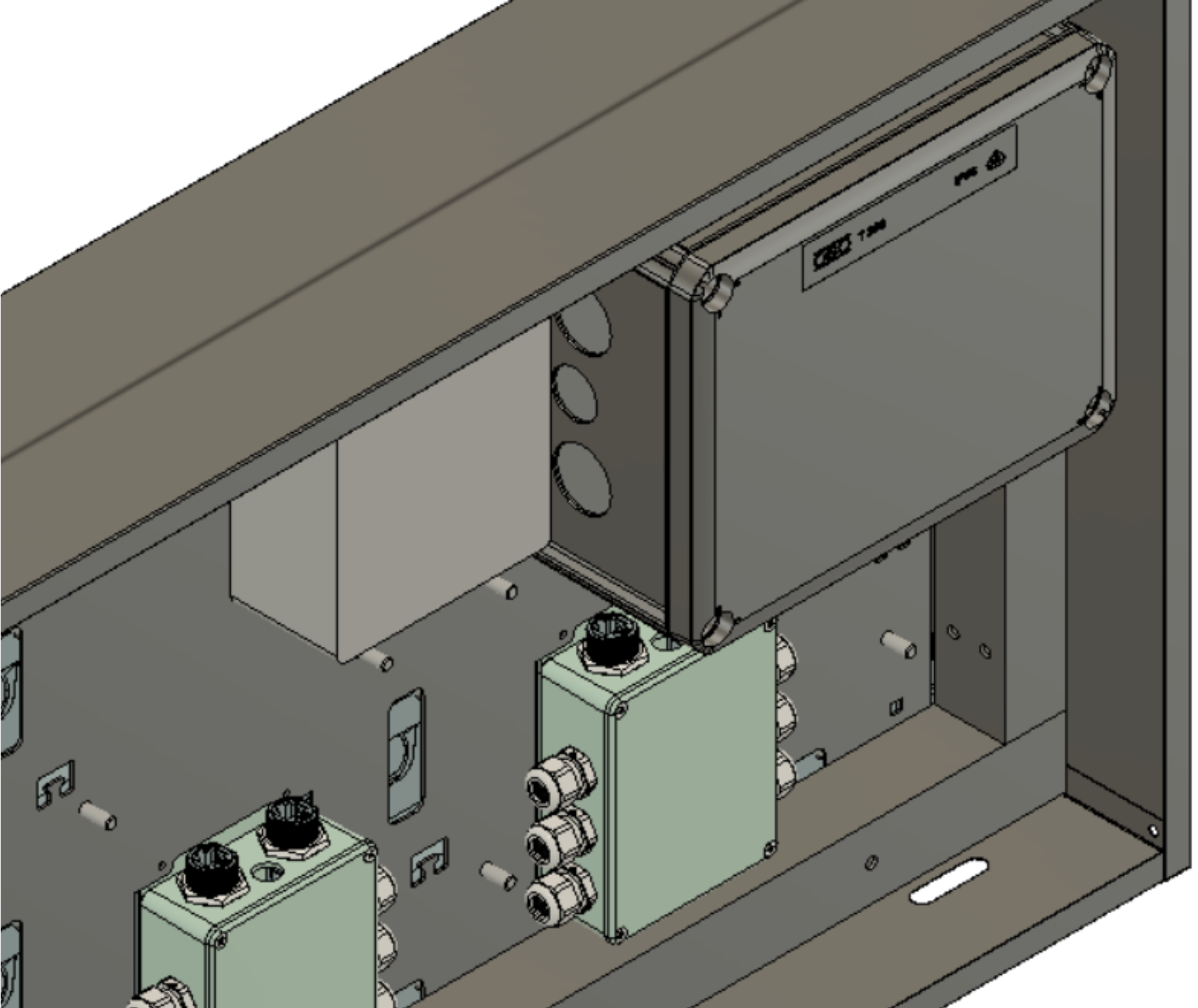
Physical prototyping
After we ensured all mechanical engineering challenges were solved , we made an inventory of components needed and a plan of prototyping. We did material research to figure out which would be best considering it should be light, but sturdy and withstand different weather conditions. We also had to consider the fact that someone would have to stand on a ladder to put it together, so the assembly should be as simple and light as possible. We decided to first test out all components in the office, before going outside to hang it on the pole.
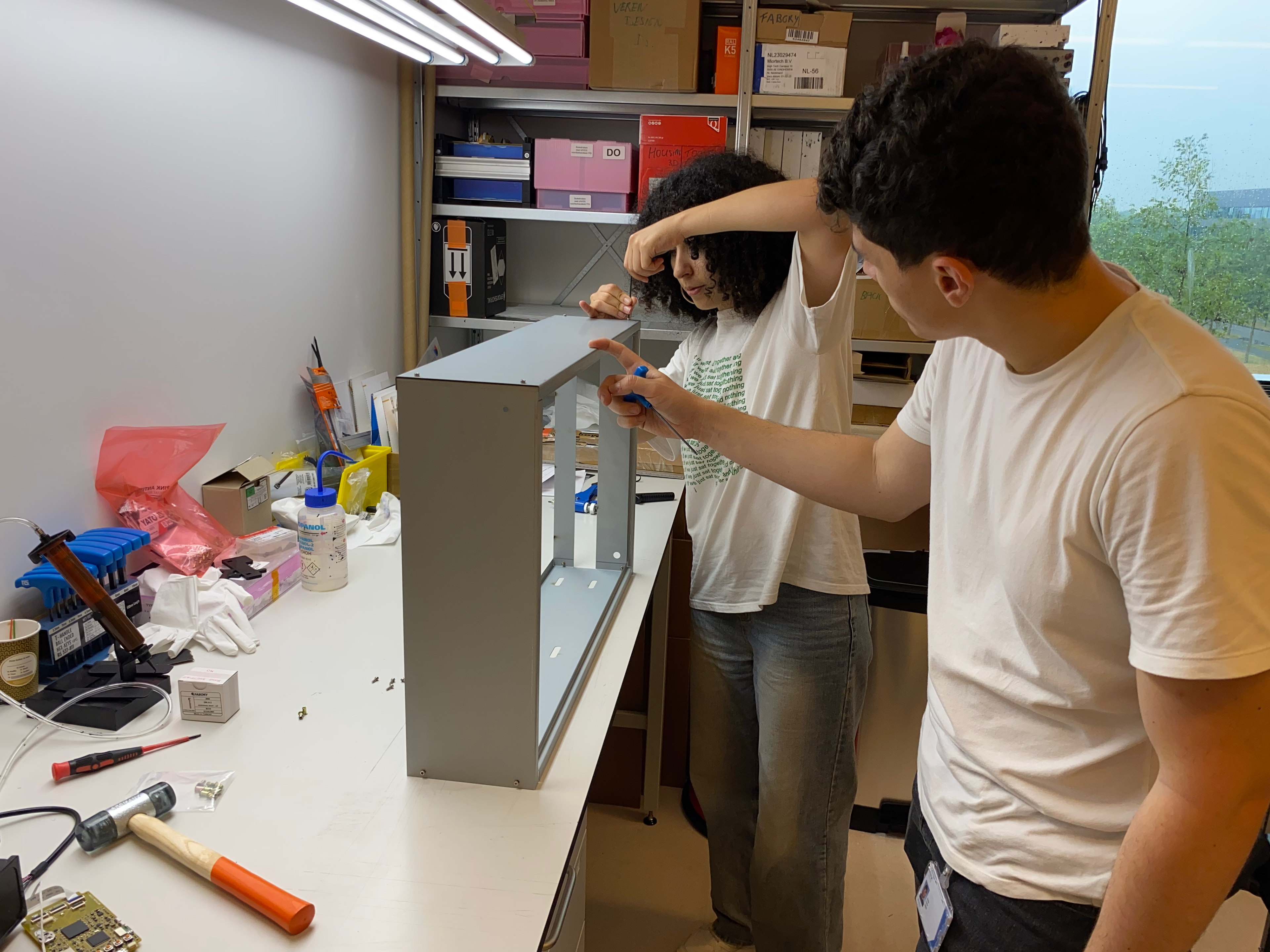
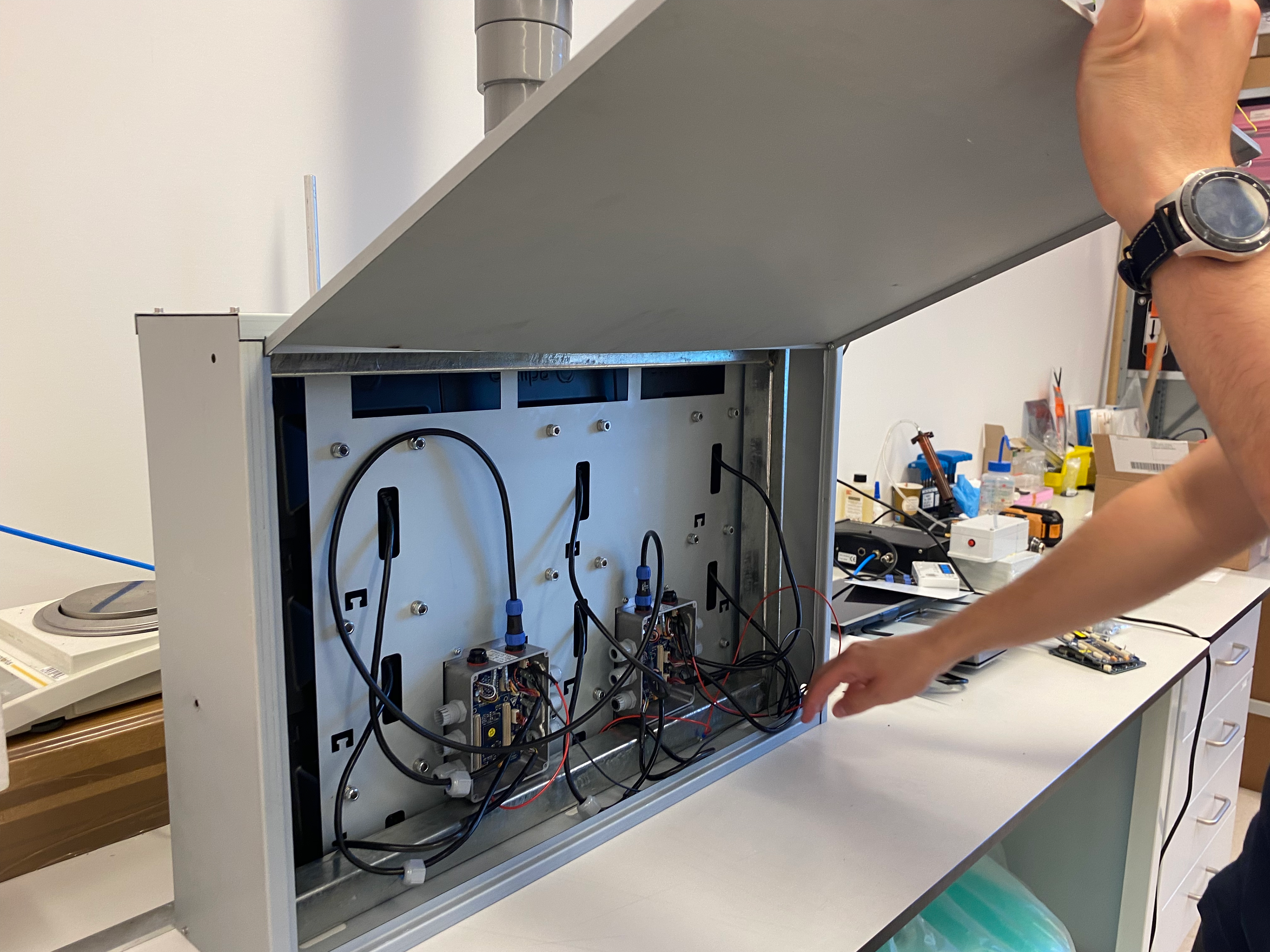
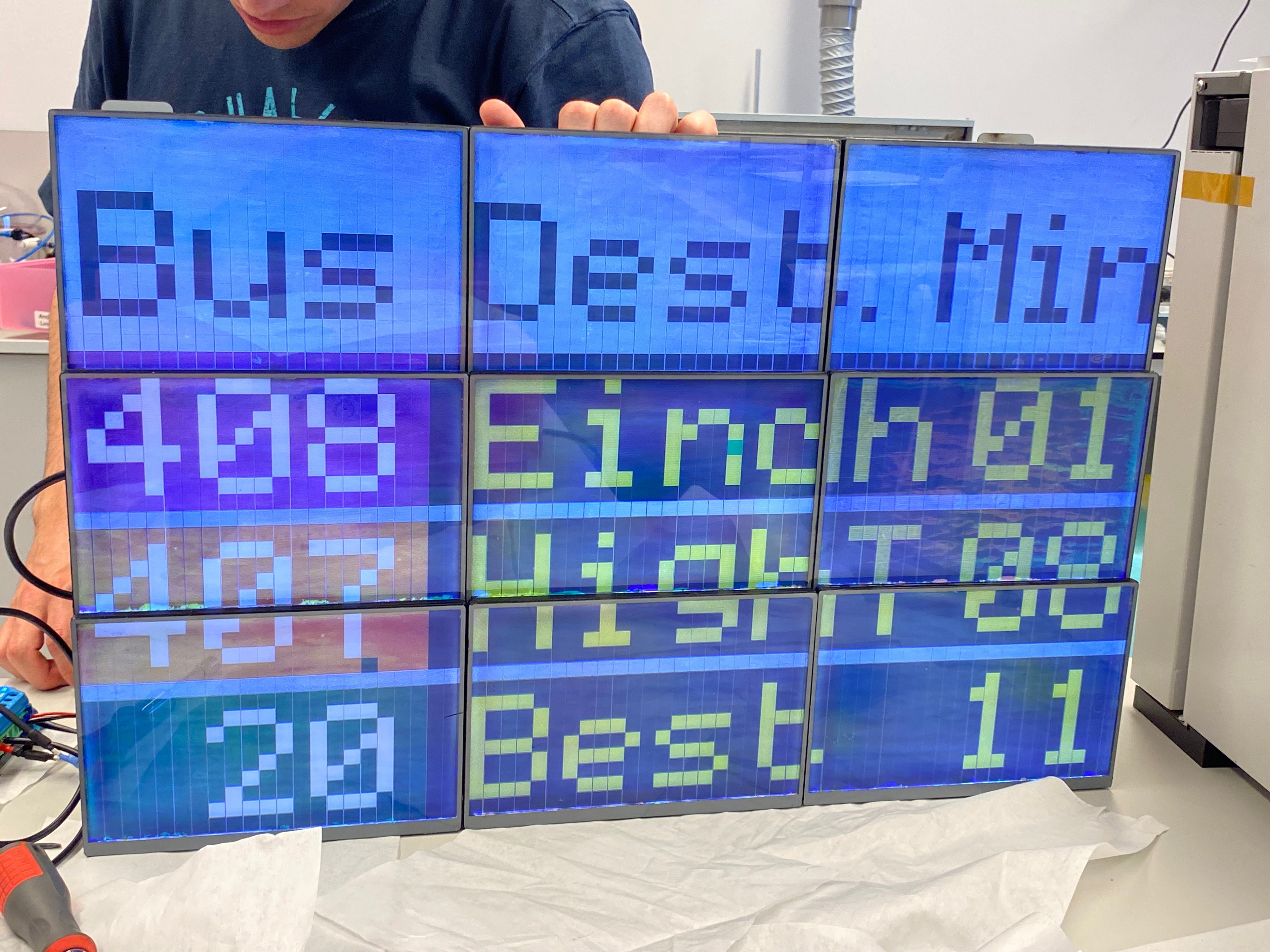
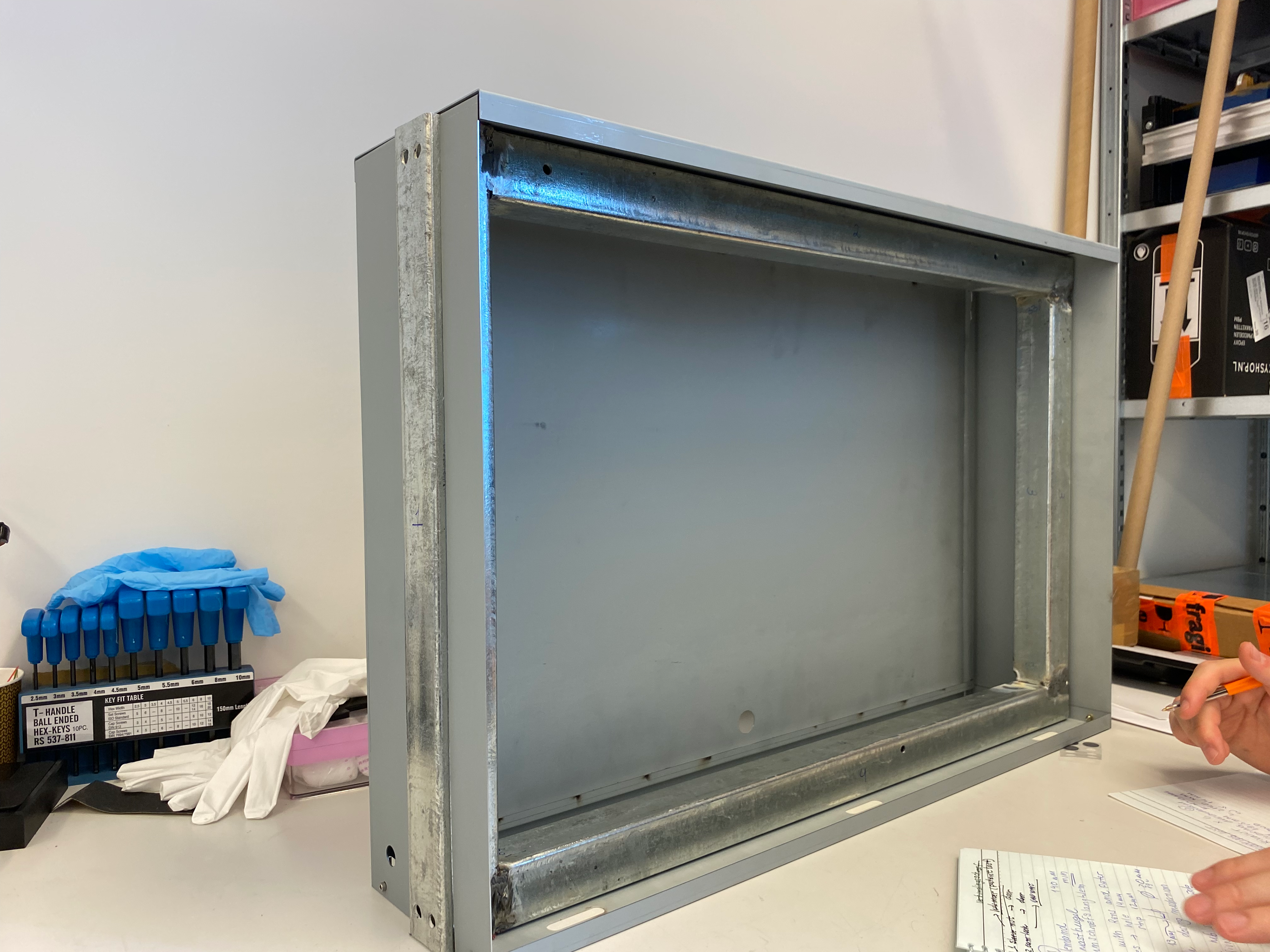
Data & Server
Simultaneously with building the prototype, we are also working on creating a program that sends bus stop data from the buses that pass by bus stop HTC Vijver (next to Etulipa's office). OpenOV provides the bus schedules data of all public transport in the Netherlands. We use Python to filter the data and are currently creating a server that should send this data in the right format to the display. Then the display driver should convert this data to a readable and attractive layout. By doing most computations of the data on the server, the display requires little energy and can run on solar power.
A flowchart of the bus stop data stream to the display.
